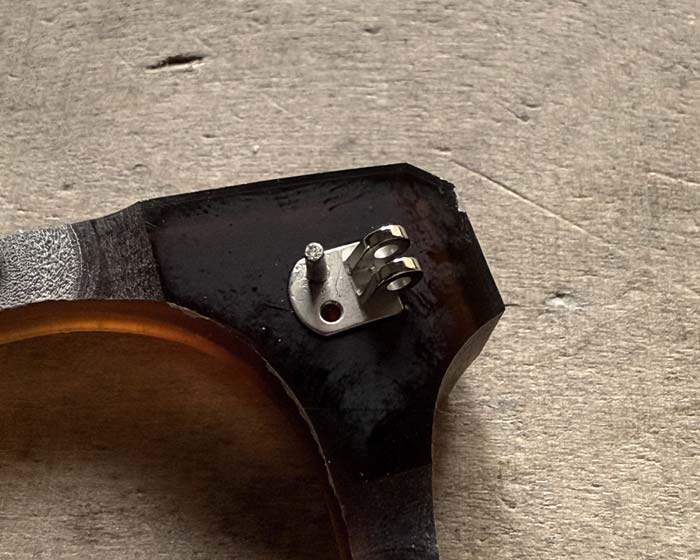Lucy always says my hands would be "better for farm work than frame work".
She isn't wrong.
I have to use tweezers to pick up the tiny components we use to build your glasses which always make her chuckle.
But as I've learned, many men before me used tongs to handle rivets.
Right here at the river beside our new workshop.
For more than 100 years
Glasgow was the shipbuilding capital of the world.
Over 200 shipyards lined the river Clyde and by WW1, nearly a fifth of the world's ships were made here.
Impressive for what began as a fishing village.
Anyways, steel plates the size of houses were fastened together by rivets. Solid metal studs built mighty vessels that sailed the world.
Today, by this old shipyard, Lucy and I use the same principles to make equally strong spectacles to last.
Our rivets might be smaller, but their purpose hasn’t changed.


Thud
A single rivet.
Only 7 more to go before this glasses frame has all it's hinges attached.
But why bother when there's faster ways?
Well that's a great lesson.
BIG eyewear factories need to make frames fast. To save time, many of them don't use rivets to attach spectacle hinges. Instead, they melt them-in with heat. It's quicker and cheaper.
But there's a catch.
Over time and hundreds of open/closes whenever you put them on, spectacle hinges can come loose. Without rivets those "speedy" melted hinges can't easily be re-fixed.
And so your frame dies.
Whenever it's time to poke the tiny rivets through your glasses frame, it's easy to question "why?"
They're so infuriatingly slow and small. I have to use tweezers, one by one. (Much to Lucy's amusement.)
Rivets, however, can be re-fixed. Not now, but eventually... if they happen to come loose.
It's funny how expensive turns out cheap in the end.




Shipyard strong
To build ships, rivets were heated in a furnace until they became "cherry red".
Using tongs, the glowing stud was skilfully tossed from the fire to a "catcher" who caught it in their gloved hands. With haste, the rivet was put through a hole between two sections of steel before it was "domed" with a hammer.
As the rivet cooled, it also contracted, clenching the steel together like an iron fist.
Those rivets were so hot, workers lit their cigarettes against them in the Glasgow rain. Steam would hiss.
But neither Lucy or I smoke.
Nor do we heat rivets to make your glasses.
If they were that hot, they'd just melt the acetate and make a weak joint. Like those big eyewear factories I mentioned.
Instead, we use cold rivets to attach your frame's hinges. At just 1mm in diameter, they're carefully fastened using a pencil-sized punch.
Unlike the brutality of a hammer, this gentler method gives us far more control. It allows the hinge to be seated properly in the acetate, not tilted off to one side from an overzealous "whack".
Because even the smallest tilt can affect how your glasses rest behind your ears or how they poise upon your writing desk.
We don't hammer your rivets.
We "peen" them.

As you've read, our methods aren't quick.
Nor are they new.
Rivets have been used to build things since 3,000 BC. After all, how else would an ancient Egyptian craftsman attach a handle to his water jug?
So yea, there's something very satisfying about the beautiful small pins that shimmer on the front of your spectacles.
I hope you agree.
"From shipyards to spectacles — there's tradition forged in every frame."

Thanks for reading,
Jamie, co-founder x